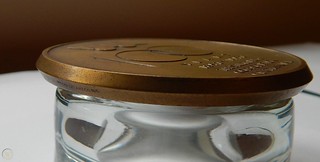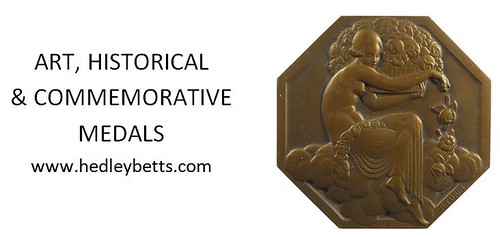
PREV ARTICLE
NEXT ARTICLE
FULL ISSUE
PREV FULL ISSUE
VOCABULARY TERM: EDGEDick Johnson submitted this entry from his Encyclopedia of Coin and Medal Terminology. Thanks! I added a couple images. -Editor Edge. The outer circumference or plane of a numismatic or medallic item formed by the thickness of the piece. Edges are not to be confused with border or rims, which are parts of the obverse and reverse planes; but edges extend from the termination of the border or rim on one side to the termination on the opposite side of the piece, from one rim/edge juncture to the other. The shape of the edge adds to its artistic effect. Basically there are seven shapes: 1) Squared edge: has sharp, angular corners. 2) Rounded edge: has no corners, but forms a smooth half circle. 3) Beveled edge: has one side's diameter greater than the other causing a slanting or oblique edge. 4) Double beveled edge: has two beveled edges coming together and forming a sharp point at the center of the edge. 5) Concave edge: semi-circular cavity around entire circumference. 6) Contorniate edge: one or more furrows in the edge. 7) Cannelured edge: a depressed panel or groove with ornamentation or lettering, as engrailment, created by the canneluring machine. 

LEFT: Studebaker Centennial Medal RIGHT: Weisman Institute of Science Medal An example of the double beveled edge is the Studebaker Centennial Medal of 1952 (52-6); an example of a concave edge is the 4-inch Woolworth 150th Anniversary Medal of 1929 by Whitehead & Hoag (J&J 25:8); and an example of contorniate edge is the Weisman Institute of Science Medal, 1959. Some edges were hand filed to make round or fit a prescribed diameter, as to fit a mounting, a bezel or an album porthole. At the Paris Mint in 1640s hand-filed edges are in evidence (as Louis XIII and Richelieu Medal, 1641, J&J 20:382). A form of adjusting or preforming blanks before striking has occurred as well. Edges are humorously (but accurately) referred to as the "third side" of a numismatic or medallic item and are the location of reeding, or a variety of lettering, figures, symbols, ornamentation, engrailment or hallmarking. Reeding was originally invented to prevent clipping of coins, then other forms of ornaments were applied to the edges of coins, notably engrailment and lettering. Lettering and numbering are widely applied to medallic items. See edge lettering and numbering. Looking for the meaning of a numismatic word, or the description of a term? Try the Newman Numismatic Portal's Numismatic Dictionary at: https://nnp.wustl.edu/library/dictionary Or if you would like a printed copy of the complete Encyclopedia, it is available. There are 1,854 terms, on 678 pages, in The Encyclopedia of Coin and Medal Technology. Even running two a week would require more than 19 years to publish them all. If you would like an advance draft of this vital reference work it may be obtained from the author for your check of $50 sent postpaid. Dick Johnson, 139 Thompson Drive, Torrington, CT 06790. 
Wayne Homren, Editor The Numismatic Bibliomania Society is a non-profit organization promoting numismatic literature. See our web site at coinbooks.org. To submit items for publication in The E-Sylum, write to the Editor at this address: whomren@gmail.com To subscribe go to: https://my.binhost.com/lists/listinfo/esylum All Rights Reserved. NBS Home Page Contact the NBS webmaster 
|